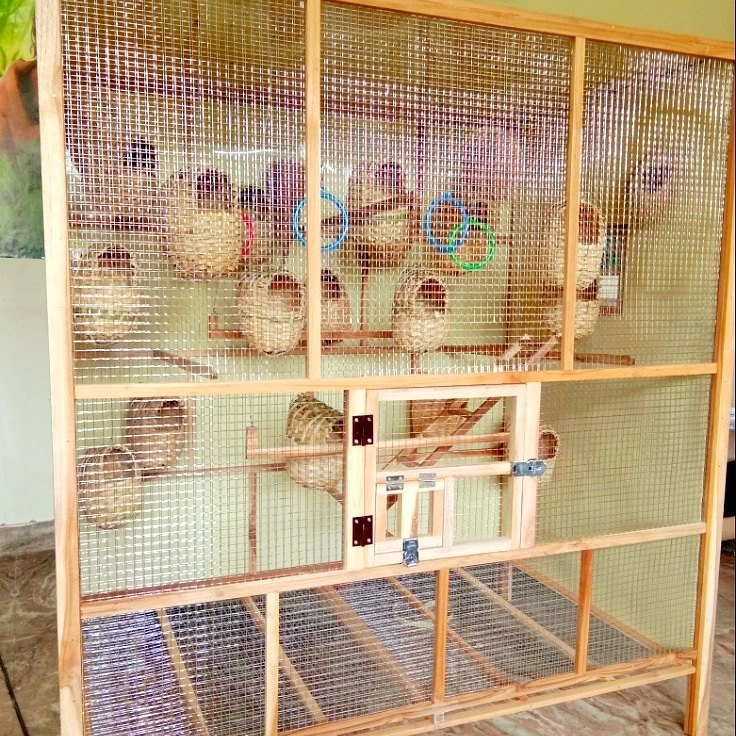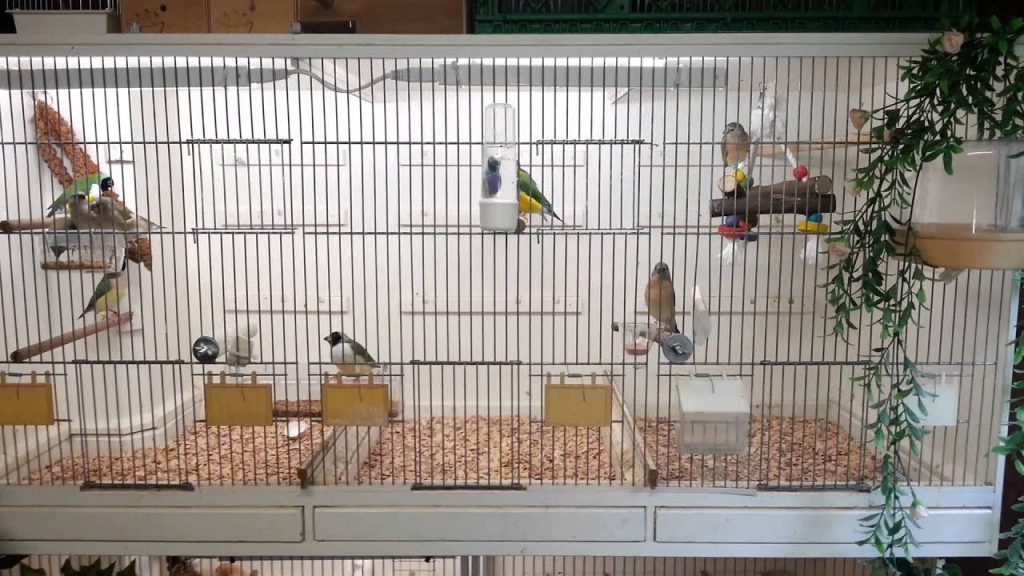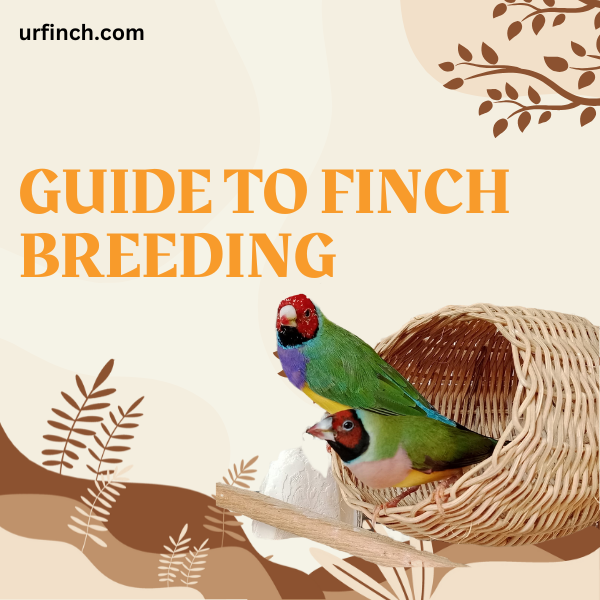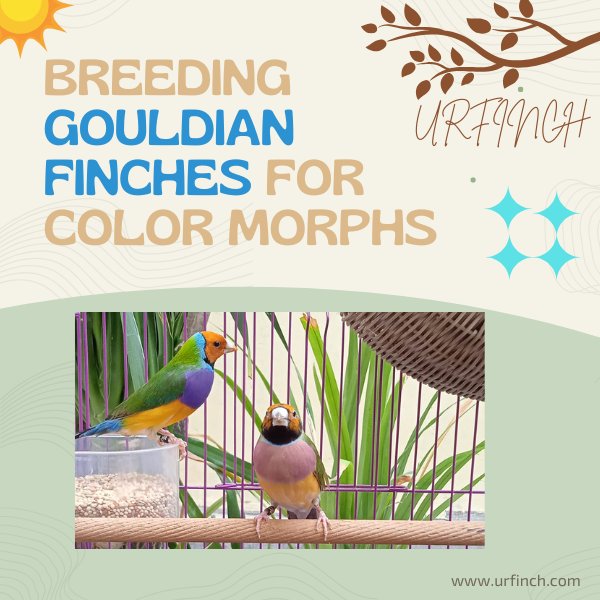Alright, so you’ve decided to keep some finches, huh? Awesome choice! These little feathered friends are lively, colorful, and full of personality. But here’s the thing: setting up the perfect cage for your finches isn’t just about tossing in some seeds and calling it a day. Nope, it takes a bit of thought and effort to make sure your finches are happy, healthy, and thriving. Let’s break it all down, step by step, so you can give your birds the setup they deserve.
If you’re planning to welcome finches into your life, you’ve made a fantastic choice! These tiny, colorful birds bring joy and charm to any space. But before bringing them home, you’ll need to set up a cozy and safe cage where they can thrive. Here’s everything you need to know about creating the ultimate finch haven.

Step 1: Choosing the Right Cage
The cage is your finches’ world, so picking the right one is super important. Here’s what to keep in mind:
- Size Matters Finches are active birds. They don’t climb like parrots; instead, they love flying back and forth. A rectangular cage works best because it gives them horizontal space to stretch their wings. Go for a cage that’s at least 30 inches wide for a pair of finches. If you’re planning on more finches, make sure to scale up.
- Bar Spacing Finches are tiny, so the bars on the cage need to be close enough to prevent any escape attempts. Aim for bar spacing between 1/4 to 1/2 inch.
- Material Stick to cages made of non-toxic materials. Powder-coated metal cages are durable and safe, while stainless steel is the gold standard (but pricey). Avoid cages with paint that might chip off or contain harmful chemicals.
Step 2: Location, Location, Location
Where you place your finches’ cage is just as important as the cage itself. Here are some tips:
- Avoid Drafts and Direct Sunlight Place the cage away from windows, air conditioners, and heaters. Drafts can make your finches sick, and too much direct sunlight can overheat them.
- Quiet but Social Finches enjoy being near their humans but not in overly noisy areas. A corner of the living room works great, as long as it’s not right next to a TV or loud speakers.
- Stable Surface Make sure the cage is on a stable stand or table. Finches don’t like sudden movements or vibrations.
Step 3: Setting Up the Basics

Once you’ve got the perfect cage and location, it’s time to deck it out with the essentials:
- Perches Perches are where your finches will spend most of their time. Use a mix of natural wood perches and textured ones to keep their feet healthy. Avoid sandpaper perches—they can hurt your birds.
- Placement: Arrange perches at different heights but keep enough flying space.
- Size: Choose perches of various diameters to exercise their feet.
- Food and Water Bowls Finches need fresh food and water daily. Use shallow bowls or specialized bird feeders that clip onto the cage bars. Place them where your finches can easily access them but not directly under perches (nobody wants poop in their food!).
- Lining the Cage Line the bottom of the cage with bird-safe paper or plain newspaper. Avoid printed papers with toxic ink. This makes cleaning up droppings a breeze and keeps things hygienic.
- Bath Time Finches love to bathe! Place a shallow bird bath in the cage a few times a week. Alternatively, you can mist them gently with water.
Step 4: Adding Enrichment
Finches might be small, but they’re smart and curious. Adding enrichment keeps them happy and entertained:
- Toys Choose lightweight toys like swings, bells, and mirrors. Rotate toys regularly to keep things exciting.
- Plants Safe, non-toxic plants like spider plants or pothos can brighten up the cage and mimic a natural environment.
- Nest Boxes If you plan to breed your finches, add a nest box. Otherwise, they’ll be happy with cozy spots to rest.
- Foraging Fun Scatter some seeds on the cage floor or hide treats in small toys to encourage natural foraging behavior.
Step 5: Cleaning and Maintenance
A clean cage equals healthy, happy finches. Here’s a quick guide to keeping things spick and span:
- Daily: Replace food, water, and cage lining.
- Weekly: Wipe down perches, toys, and bars with a bird-safe cleaner.
- Monthly: Deep clean the entire cage. Remove everything, scrub it down, and rinse thoroughly.
Step 6: Temperature and Lighting
Finches are sensitive to extreme temperatures. Keep the room between 65-75°F (18-24°C). For lighting, provide 10-12 hours of natural or artificial daylight. If using artificial light, consider a full-spectrum bulb designed for birds.
Step 7: Monitoring Your Finches
Once everything is set up, keep an eye on your feathered friends. Healthy finches are active, vocal, and have bright feathers. If you notice any unusual behavior, like lethargy or fluffing up for long periods, consult an avian vet.
Common Mistakes to Avoid
Even with the best intentions, mistakes can happen when setting up a finch cage. Here are some common pitfalls to steer clear of:
- Overcrowding the Cage While it’s tempting to get multiple finches, overcrowding can lead to stress and fights. Always ensure the cage size matches the number of birds.
- Improper Perch Placement Placing perches too close together can limit flying space. Similarly, perches directly above food or water bowls can lead to contamination.
- Using Unsafe Materials Avoid using painted or treated wood for perches and toys. These can be toxic if chewed.
- Skipping Regular Cleaning A dirty cage can quickly become a breeding ground for bacteria and parasites. Stick to a cleaning schedule to keep your finches healthy.
- Neglecting Social Needs Finches are social birds. Keeping a single finch without a companion can lead to loneliness and stress.
- Wrong Diet Feeding only seeds can lead to nutritional deficiencies. A balanced diet includes seeds, fresh fruits, veggies, and occasional protein.
- Ignoring Signs of Stress or Illness Watch your finches for signs like excessive fluffing, lethargy, or changes in appetite. Early intervention can prevent serious health issues.
- Poor Cage Placement Placing the cage in high-traffic areas or near drafts can stress your birds. Find a quiet, stable spot with good ventilation.
Final Thoughts
Setting up a finch cage might seem like a lot of work, but it’s worth it. When your finches are happily chirping and fluttering around, you’ll know you’ve created a safe and loving home for them. Plus, watching them thrive is one of the best feelings ever. So go ahead, start building your finch paradise today!
Setting up a finch cage isn’t rocket science, but it does require some thought and care. By following these tips, you’re creating a safe, comfortable, and fun environment for your feathered friends. And trust me, once your finches are flitting around, singing, and generally being adorable, all the effort will feel totally worth it.
So, what are you waiting for? Get that cage set up and let your finch adventures begin!

